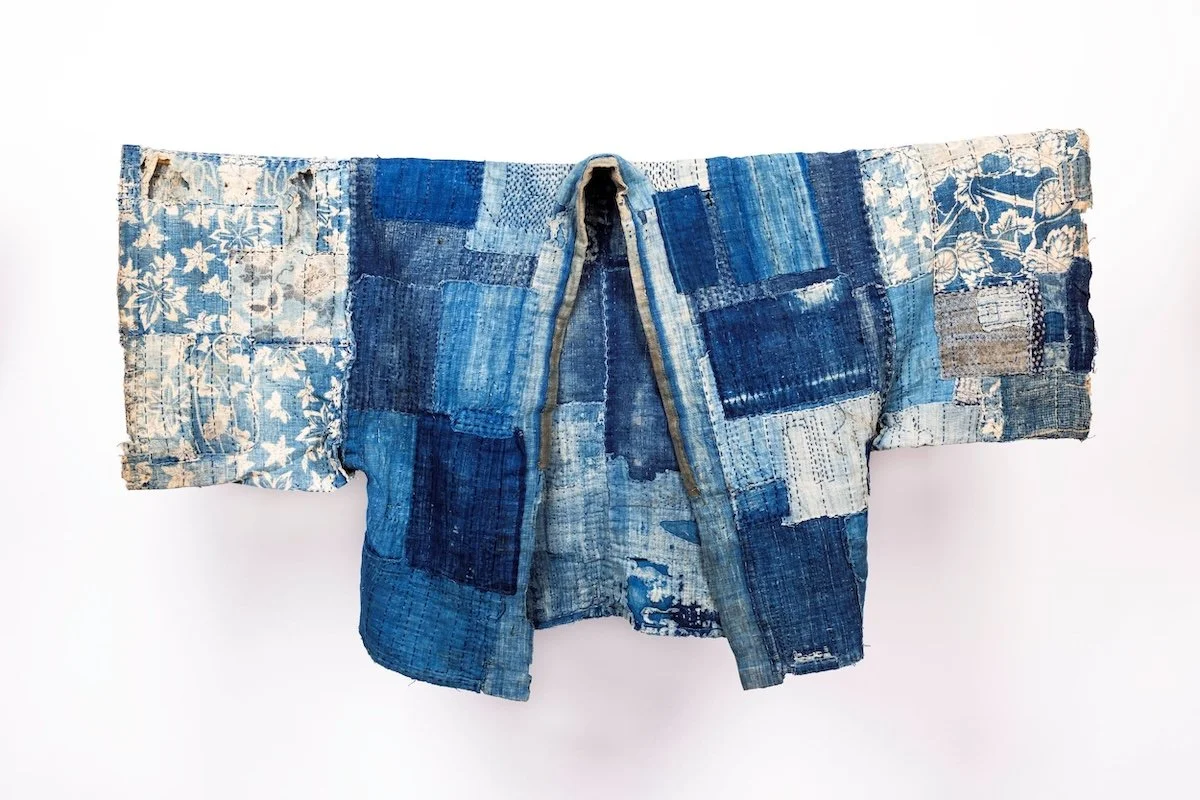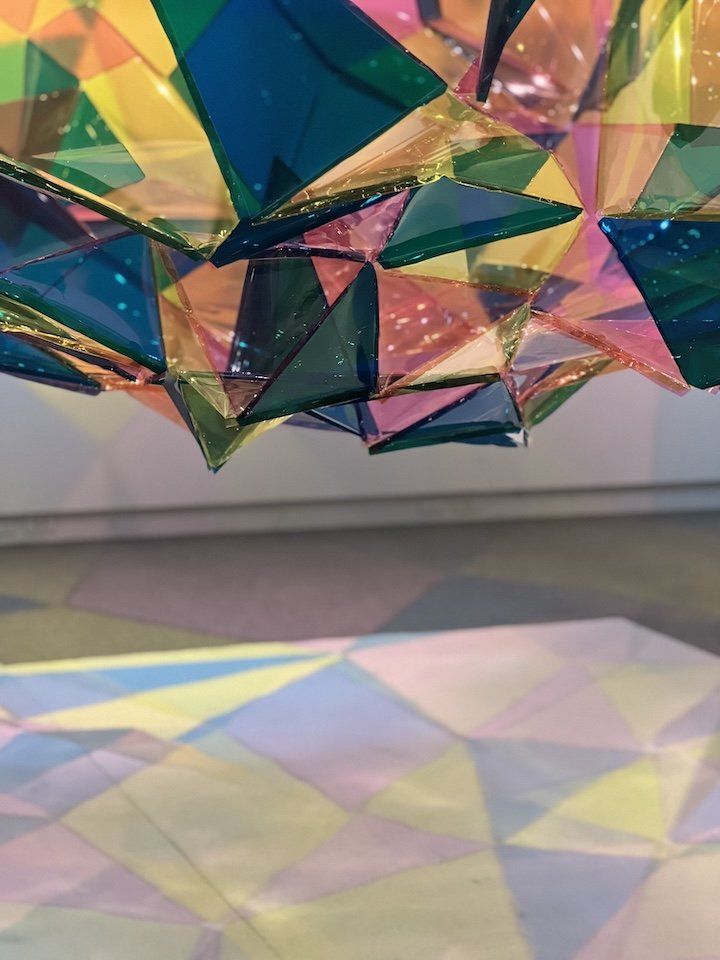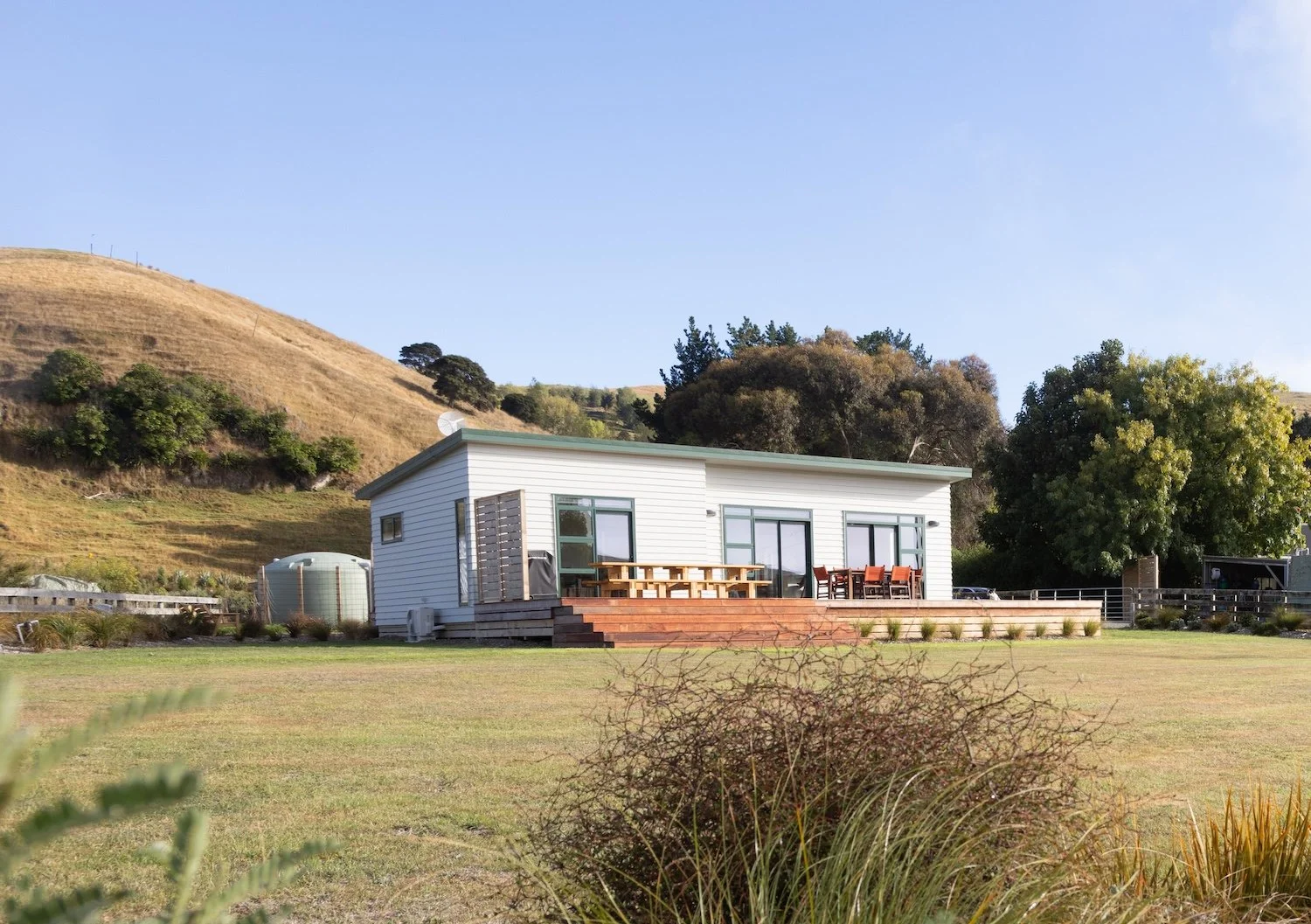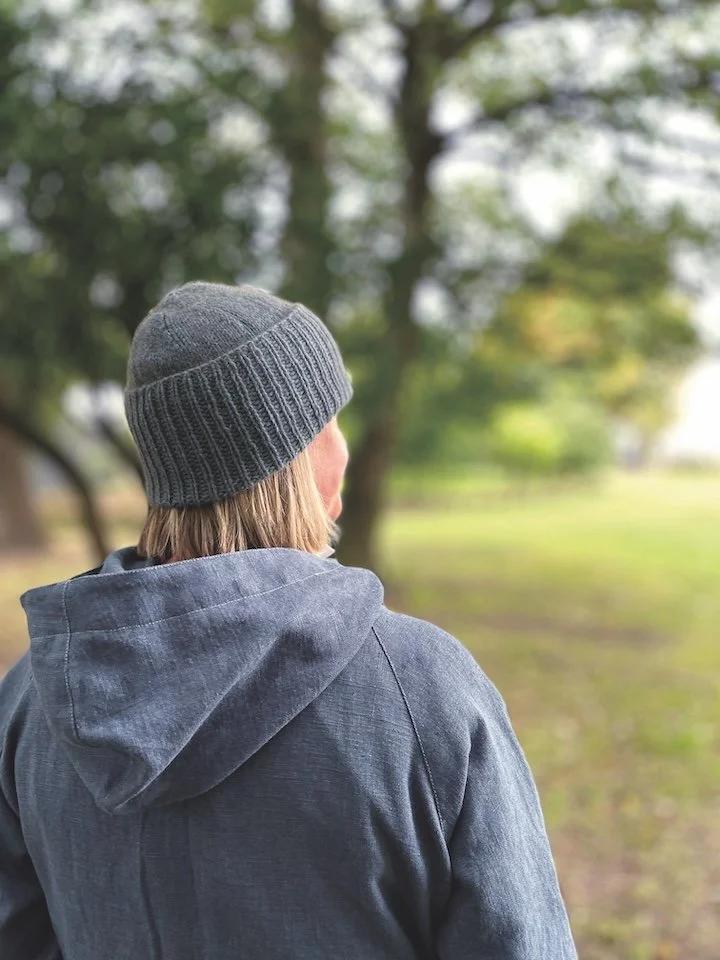Autumn at Aratoi
With works taken from across from across the motu, Aratoi’s Autumn exhibition schedule is a nod to the lessons of our past and how we can adapt them to create a better future.
Pictured above: a boro noragi, early 1900s, sashiko-stitched, indigo and katazome dyed cotton. Collection of Pip Steel Image courtesy of Te Manawa, Image: Sam Millen
Main Gallery exhibition Der Tiefenglanz: Deep Gloss is a collaboration by contemporary jeweller Karl Fritsch and photographer Gavin Hipkins which plays on notions of perception. Photography and contemporary jewellery have both experienced periods where they have been criticised for their conceptual depth.
Hipkins has selected images from his archive of negatives, and printed these as gelatin silver photographs, before passing them onto Fritsch, who mounts them onto aluminium sheets— independently and brusquely pierces each one with his own archive of found gemstones and fine metals hoarded from his studio. This exhibition is a collaboration with the Hamish McKay Gallery in Wellington with loans from across Aotearoa.
“Aratoi is thrilled to be showcasing the collaborative work of two of our country’s leading artists,” say Aratoi’s Director Sarah McClintock. “The final work, a result of their intimate trust in each other, is at one dark, irreverent, shocking and poignant.”
“Karl and Gavin have been working together on this project for over a decade, and this exhibition is a testament to the depth of their individual and collective creativity. This is an exhibition that should not be missed!”
Complementing Der Tiefenglaz: Deep Gloss in the Main Gallery is local artist Janet Green. Green looks back over 50 years of her artistic practice, through her drawings, paintings and ceramics, taking inspiration from school days learning biology, her time working in the British Museum and as Site Conservator on archaeological excavations in South Eastern Türkiye and Cyprus. Her exhibition is aptly named Conglomeration, where many disparate things are all collected together in an unusual way.
“The portraits are influenced by the Fayum Egyptian burial portraits I encountered in The British Museum and are painted from memory,” Green explains.
The Byzantine Palm Trees were observed on her travels on a cave wall near Göreme in Cappadocia, Türkiye and first drawn in her sketch book in 1998. By contrast the Girl with the Greyhound was inspired by a glimpse while driving down High Street, Carterton.
Until May, the Windows Gallery is taken up by photographers Jim Graydon, Tim McMahon, and Peter McNeur. Each present six photographs, all taken in the Wairarapa, that illustrate our different ways of communicating moods or big ideas about familiar environments; the coast, mountains and the influence of people on our landscapes.
“It is a truism that faced with a common or familiar scene, every photographer will have their own idea about how to convey what they see or feel,” says McMahon. “Six by Three’ is an exhibition of photographs that explores these ideas.”
Detail from Gabby O’Connor, All The Colours, All The Light, 2017-2025, lighting gel, staples, light. Photograph: Gabby O Connor
Next in the Wesley Wing, comes the family friendly exhibition Kaleidoscope which explores the relationship between the science of light and art. Featuring Gabby O'Connor's stunning installation All The Colours, All The Light, Jane Gibbens sparkling gemstone paintings and Pat Hanly's Rainbow over Mt Eden alongside hands on experiments created by Fab Lab, Kaleidoscope creates an immersive and family friendly space that lets you play with light and notice how it changes through reflection and refraction.
Exhibition curator Becky Bateman has always been fascinated by the relationship between science and art. She says, “It’s a perfect exhibition to celebrate Matariki. Discover how light is created, can be bent, moved or changed.”
Opening in April, Boro: Timeworn Textiles of Old Japan a show that has been touring the North Island over the last 18 months, is coming to Aratoi’s Social History Gallery. Boro (ぼろ) is Japanese cloth that has been repeatedly repaired and hand, sewn with a running stitch called sashiko. The term boro refers to patched, pieced, stitched and mended garments, bedding and other utilitarian items which were often hand‐dyed with indigo. Today boro is appreciated as a symbol of tenacity and resilience. It is reflective of extreme hardship and life’s’ challenges.
Opening in mid-May, Linda Kirkland’s first solo show in Aratoi’s Windows Gallery titled Tracks and Traces. It is a reflection of her journey as an artist and immigrant. She moved to New Zealand in 1994, in search of a safe haven and new opportunity for her family. She arrived in a place that in many ways was completely foreign.
“I drew inspiration from the region’s landscape, where grasslands, mountains and coast, and hot dry summers reminded me of my roots. Through my work I try to find my connection to the landscapes of my past and present.”
Autumn Exhibitions
Der Tieflenglaz: Deep Gloss by Karl Fritsch and Gavin Hipkins 22 March – 8 June
Janet Green: Conglomeration 22 March – 8 June
Jim Graydon, Tim McMahon and Peter McNeur: Six by Three 8 February- 4 May
Kaleidoscope 19 April – 14 July
Boro: Timeworn Textiles of Old Japan 26 April – 20 July
Linda Kirkland: Tracks and Traces 10 May – 3 August



